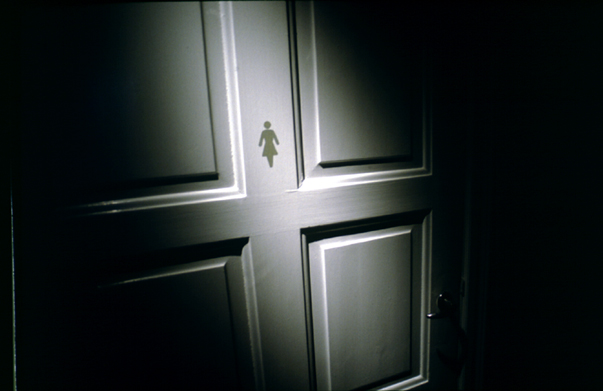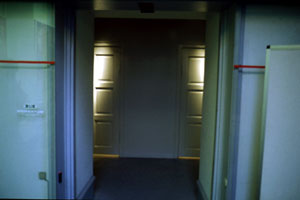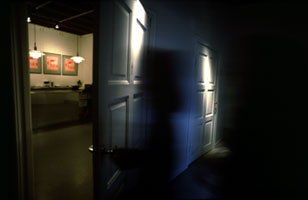| Katya Sander | e@katyasander.net |
| Two Doors In: Boomerang (showing 69 female artists), Nikolaj Exhibition Space for Contemporary Art, Copenhagen, 1998. (Catalogue)  Just beyond the original exhibition entrance, an extra wall was built. In this ‘second’ entrance there is not just one, but two doors: one on the left and one on the right. Visitors had to choose one of these doors in order to proceed. A small sign was all that differentiated the two doors from each other: There was a pictogram of a woman (the well-known black silhouette with its stiffened skirt) on one door, while on the other was a pictogram of a man (same silhouette, only confidently spread legs instead of the skirt). Despite the difference marked on these doors, the spectators would enter the same space, a space which normally pretends to disregard gender differentiation.
The modern museum space with its white walls has, on the contrary, traditionally insisted on neutrality, and thus also presupposed that the spectator is neutral – that a neutral gaze is possible. Regardless of the door you choose to enter the space, you are reminded of your gender, almost as a reflex. You cannot step into the exhibition room without this reminder, here not directly referring to any specific functions of the space, but rather to the identity of a body – yours – specified as male or female in this space. This articulation of the body through force – forcing you to identify with a sign of gender in order to enter the exhibition space – is something that all spaces require of bodies in order for them to appear.
|


